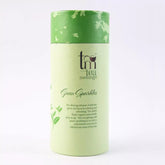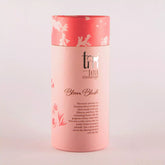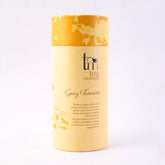What is White Tea
White tea:
All true teas – green, black, oolong, white, and pu-erh are made from the same plant Camellia sinensis— the Tea plant. Each tea is processed differently to produce an array of unique flavors, colors, and taste profiles.
White tea is known to be one of the most delicate teas as compared to other varieties. It is harvested before the leaves of the plant unfurl completely and when the young buds are still covered with fine white hairs. The buds and unfurled leaves are carefully handpicked and are allowed to wither and quickly air-dried under the sun or under a controlled environment to stop oxidization. This minimal processing results in a light liquor with excellent flavors.
White tea was first commercially produced from the white tea plant varieties in China’s Fujian province in the 1700s. Today, various versions of white tea are cultivated in many countries outside China as Nepal and India. Some of the most popular white tea varieties include:
- Silver Needle White tea :
While most white teas are made from buds AND the leaves of the tea plant, Silver Needle is made just with the full buds that are covered with fine white hairs. The hairs protect the buds from cold, stress, and pests. Hence the name silver needles or tips.
The tea buds are tiny and they have to be hand-picked very carefully. Thousands of such buds are needed to make just a kilogram of silver-needle white tea. This makes the silver needle expensive, and also less common than other types of white teas. Silver Needle is considered to be the “highest grade” and the buds contain the highest levels of theanine and antioxidants. The gold green – yellow liquor is lively, mesmerizing, and just bursting with energy.
- White Peony: This variety of white tea is cultivated in China and many other countries. It includes some buds along with unfurled or barely opened young tea leaves. White peony liquor is slightly deeper than silver needle tea.
- Monkey Picked White Tea: This variety of tea was rumoured to have once been harvested by Buddhist-trained monkeys from the tea plants in the mountainous regions of China. Today, this variety denotes a very high-quality tea made from the buds and young leaves of the tea plant growing in very high-altitude regions. When steeped it produces a light yellowish-green infusion with nuances of honey and apricot.
Health benefits of white tea-
White is packed with health benefits.
Good source of Antioxidants
White tea is the least processed tea and contains high amounts of phytochemicals such as polyphenols, flavonoids, and tannins. These compounds exert antioxidant effects and have a positive effect on our health and well-being. Antioxidants offer protection against free radicals-induced cell damage. Free radicals are linked to aging, chronic inflammation, a weakened immune system, and a variety of harmful diseases.
Good for heart
Studies have found that polyphenols help in lowering blood cholesterol levels, a risk factor for heart disease.
Aids weight loss
White tea is a rich source of caffeine and catechins like epigallocatechin gallate (EGCG). These compounds along with other polyphenols in white tea promote lipolysis and boost metabolism and aid in weight loss.
Better skin health
The high amounts of antioxidants in white tea aid cell repair and maintain skin health. White tea helps in slowing the cellular aging process and helps reduce the risk of premature aging. White tea impedes the UV rays and protects the skin cells.
Scalp and hair health
The catechin-epigallocatechin gallate (EGCG) in white tea has been shown to reduce hair fall and enhance hair growth. EGCG has also been shown to reduce dandruff and also help hair from drying out.
Promotes oral health
White tea is a great source of fluoride, catechins, and tannins. Fluoride in the tea help prevent dental decay or cavities. White tea also prevents the growth of plaque and strengthens gums.
Regulates blood sugar levels
Some study results suggest that catechins in white tea can help reduce high glucose levels in diabetic patients.
Antibacterial effects
Polyphenols present in white tea are shown to possess potent anti-bacterial effects.
Anti-inflammatory effects
The catechins and polyphenols in the tea have been shown to possess potent anti-inflammatory properties. It is shown to improve blood circulation and increases oxygen supply to the brain. White tea is also very soothing and thus very effective in treating minor headaches and aches and body aches. It has been shown to reduce the risk of osteoporosis and has been found to be good for bone health.
Anti-cancer effects
White tea offers multiple impressive health benefits and it is sure a huge step towards a healthy lifestyle. Antioxidants and other polyphenols such as EGCG in white tea have been shown to fight against cancer.
Reduces Stress and anxiety
White tea is shown to reduce stress and anxiety. Regular consumption of white tea has been found to improve focus and memory.
Protects Brain cells
The brain is particularly vulnerable to oxidative damage because of its high oxygen utilization. The antioxidants present in white tea protect the cells from oxidative damage and reduce the risk of neurodegenerative disorders such as Alzheimer’s disease, Parkinson’s disease, and Huntington’s disease.
Storage
White tea is available as whole tea leaves and tea bags. The tea is to be stored in an airtight container in a cool, dry place away from light. Unflavoured white tea leaves remain in high quality for a year or two when stored well.
Our blends with white tea –
Pure Bliss
Bloom Blush
Sources-
https://www.teacurious.com/guide-silver-needle









